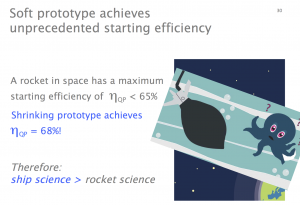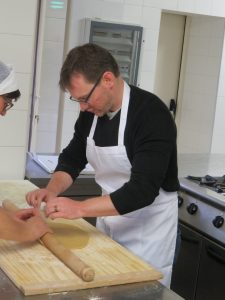At the start of November, Artur Lidtke (FSI), Daniel Roper (NOC), Georgios Salavasidis (NOC and UoS), Jon Downes (FSI), and Sophia M Schillai (FSI and NOC) headed to Tokyo for the AUV2016 conference.
From newest AUV developments in sensors and navigation to multi vehicle cooperation, the AUV2016 conference covered the current state of the art in Autonomous Underwater Vehicles. Our own contributions ranged from Computational Fluid Dynamics for the EU H2020 Bridges glider project, to vehicle risk and safe navigation of AUV in unknown terrain with restricted sensor input and novel power supply solutions.
Besides presentations, the conference included a demonstration of the impressive AUVs at the University of Tokyo and a student competition for designing a novel AUV, in which Sophia managed to impress the 8 international judges and placed first with her Pipefish AUV.
On the last day, group discussions on the current gaps in AUV development gave us the chance to exchange ideas and get the perspective of experienced AUV researchers from across the world.
After the conference we were given a tour of the headquarters of JAMSTEC (Japan Agency for Marine-Earth Science and Technology), including their newest research vessel KAIMEI, the manned submersible SHINKAI and the 10 m long URASHIMA AUV.
IMAGE CAPTION: Blair Thornton, who has now joined us in Southampton, showing the BOSS-A AUV to Artur and Sophia at The University of Tokyo
Monthly Archives: November 2016
Structurally sound awards
On 1st November 2016 Mike Ellis, a Ship Science Graduate, visited Boldrewood to present the Babcock Part 2 Structures Design Award 2016. The winners of this year’s award were Charlotte Dodge and Nathaniel Warren, who both received cash prizes. Highly commended certificates were presented to Xiao Ma, Nadir Wahab and Yifu Zhang. The winners of the award are selected for the high quality of their Structural Design course work submitted for SESS2016, Ship Structural Design and Production.

This module aims to examine aspects of design relevant to the longitudinal and transverse strength of a ship. This is conducted through both first principles design and the use of classification society rules. In addition the production technology applicable to the shipbuilding industry is examined from the perspective of the shipyard and its management but also from a design for production viewpoint. The complementary management module provides production planning and scheduling relevant to ship production.
HIPER looks to future ships

The 10th Symposium on High Performance Marine Vehicles was held in Cortona this October, on the theme “Technologies for Ships of the Future”. Dr. Weymouth represented the University of Southampton and the Fluid Structure Interaction group, giving an invited review on biologically-inspired methods for marine propulsion and maneuvering. There were quite a few interesting talks on biologically-inspired technologies as well; from shark skin and dolphin blubber inspired coatings to squid and flagella inspired underwater vehicles. The proceedings can be found via www.hiper-conf.info
Marine and maritime universities from around the world were in attendance and gave presentations, including academics from the United States (U. Michigan, Florida IT), the UK (Strathclyde, Newcastle, UCL), Europe (NTNU, TU Delft, TUMM, NTUA) and many others. There were also many research and industry groups, from Dell to the US and UK Naval research labs. There were many talks on automation and drag reduction, and the major theme seemed to be increasing maritime vessel efficiency in design, construction, and operation.
Overall the symposium was a great opportunity to renew connections from around the world and any trip to Cortona is a chance to take in the scenery, drink some wine, and even brush up on your pasta making.

